In praise of the not-so-humble fork
A recipe for berry granitas
I know it’s only a few weeks since I wrote about sorbets but I’m back on their case - or more accurately, the case of their slightly uncouth sibling, the granita. You need to get some in before the summer is over, but also as something else to do with the glorious blackberries currently bursting on the bush. A granita will take them beyond their conventional pairing with apples and cloak of crumble. A crumble is an autumn pudding, and autumn doesn’t begin officially until 21st September. Until then, it’s still granita time.
Granitas were invented under Arab rule in the 9th century in Sicily, as their official name, granita Siciliana, indicates. The ‘sherbet’, as it was originally called, was a treat reserved for the aristocracy who could afford the transport and storage of ice from the mountains. It’s made from three simple ingredients: water, sugar, and the juice of a fruit or other flavouring, such as black coffee, or almonds, mint, and jasmine - all Sicilian elements.
It doesn’t take long to create granita. What takes the hours is the freezing of it, for which you must be home or you will return to your freezer to discover you have created an impenetrable brick of fruit juice. The lovely thing about this super-lovely pud is that a fork is the only equipment you need to create it.
What would we do without that ancient implement? The first appear to date back to 2400-1900 BC, the Bronze Age era of Qijia culture, and you certainly couldn’t have used those forks to forcefully scratch up ice crystals. Made of bone and only two-tined, they have been found in archaeological sites in the upper region of China’s Yellow River and in eastern Qinghai. Marginally closer to us in time, bone forks were also unearthed from Shang dynasty sites dating around 1600 to 1050 BC.
Forks were used by Ancient Egyptians but only as cooking utensils, which is what I do with my guard-hinged fork designed to hold steady a side of beef that is being sliced with a dangerously sharp carving knife. It’s one of my most used cooking tools, prodding, stirring, and hauling stuff out of liquids.
The table fork was probably invented in the Byzantine empire where, by 4th century AD, it was in common use; then, by the 10th century, widely applied across the Middle East. Westerners, a more brutish bunch, were still using their hands to feed themselves, so that when Byzantine princess Theophanu (955–991 AD) arrived in the Holy Roman Empire upon her marriage to Emperor Otto II, the court was astonished to see she ate with a fork.
Marriage clearly had an impact on Italian table manners: when another Byzantine princess, the Greek Maria Argyropoulina, wed the son of the Doge, Pietro II Orseolo, in 1004, she brought with her to Venice forks made of gold. They were condemned as mere instruments of vanity by Peter Damian, who, before he graduated to sainthood, was the Italian cardinal and leader of the Gregorian Reform (a movement concerned with the moral integrity and independence of the clergy. See how that has unfolded.).
By the 11th century, forks were increasingly part of Italian table settings. This may explain the spreading popularity of pasta which, despite the best efforts of individuals under the age of 3, is very hard to eat with the hands.
The English held out against them until Thomas Cayote brought them back in 1608 from his travels around Italy. Historically, the Brits take very slowly to change they have not initiated themselves. I remember, growing up, a BBC TV costume drama, The Six Wives of Henry VIII.
While always dressed to the nines in finery, in every dining scene, Keith Michell as the king gnawed greedily at greasy haunches of meat clutched in both hands, tossing the bones over his velvet shoulders to the dogs. My mother wouldn’t let me follow his example.
Back to forks and granita, here is a strawberry one I made earlier.
In this the first stage, you have the pulp that has been blitzed then pressed through a sieve to eliminate the seeds. I mixed three-quarters strawberries with one quarter raspberries because I had it in mind those might add an extra level of scented flavour. You’ll have to ask the guests if they did - I forgot to.
The principle is the same for pretty much every ripe fruit - 500g/1 lb of berries, plumbs, apricots, peaches et al whizzed to a puree in a blender then pressed through a sieve to eliminate seeds or lumps. Stir in the juice of half a lemon if you have one - lemons bring out the flavour of everything.
Dissolve 60g/⅓ cup sugar or to taste in 235ml/1 cup of water over medium heat. Add the fruit puree and stir a few minutes to thicken. Pour this into a container, cool, then set in the freezer to solidify in stages. After an hour, remove the container and fork the edges into the centre, then return the container to the freezer. Repeat.
At the second time, it will look something like this. Then repeat again, freezing, forking and mashing, four times in total, then cover and put back in the freezer till ready to serve.
Set 4 pretty glasses into the freezer to chill. Scoop the granita into them and rush them to the table.
I dolloped this strawberry granita with a spoonful of lightly whipped heavy cream into which I’d grated the zest of a lime and left to macerate overnight. There was also a chocolate shortbread-textured biscuit whose recipe you will find here. Depending on how much you have grated the frozen mass during each stage you will have a more or a lesser granular mixture. If you use a hand-held wand blender at the very end, you can turn it into a silky smooth ice but I don’t think you could any longer call it a granita.
Sicily is as famous for its almonds as it is for the lemons it uses for one of its most known granita flavours. Almond granita is popular at breakfast, eaten then with a brioche. An elusive flavour, there are several ways to make this - by creating your own almond milk, or with bought almond milk, or by adding almond essence to milk, or by adding a measure of almond paste (not marzipan paste) to milk.
The method for the first is to steep 250g/8oz roughly chopped blanched almonds in 1 litre boiling almond milk or water which you’ve immediately taken off the heat for 3-4 hours, with 100g/3½oz sugar. Strain through a sieve and add the almonds to a blender. Measure off ½ litre/16 fl oz of the milk (drink the rest or souse your cereal). Pour in enough milk only to just cover the almonds and blitz to a smooth puree, then pour in the remaining milk and whizz one more. Pour into a container to freeze, continuing as for the strawberry granita.


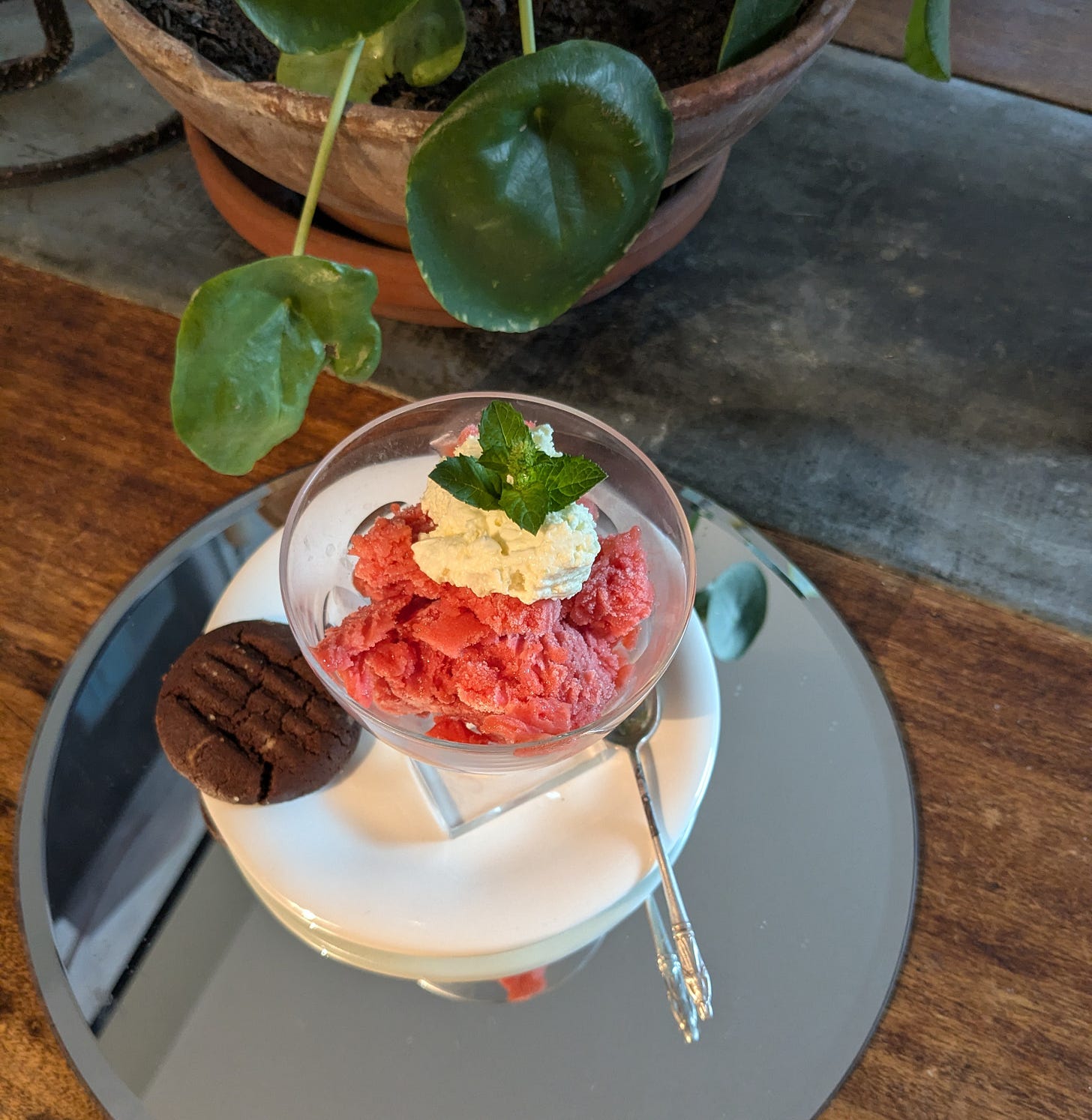
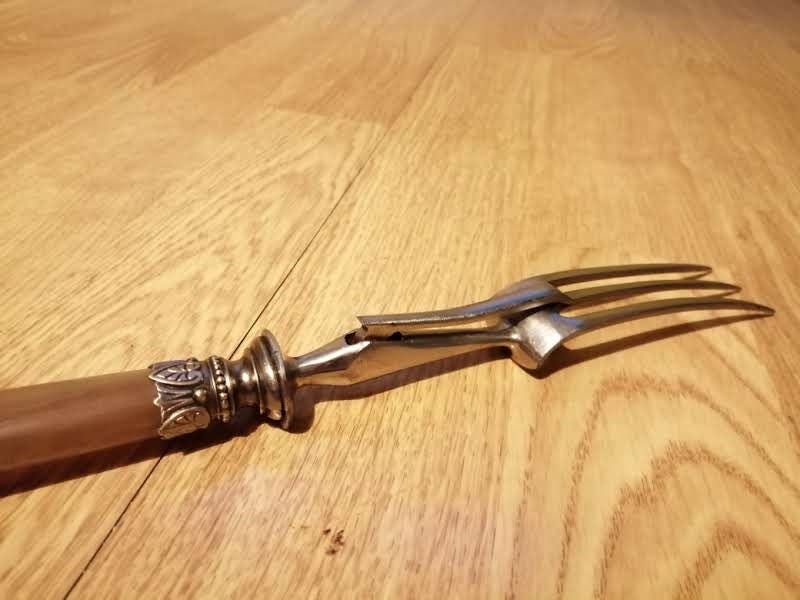

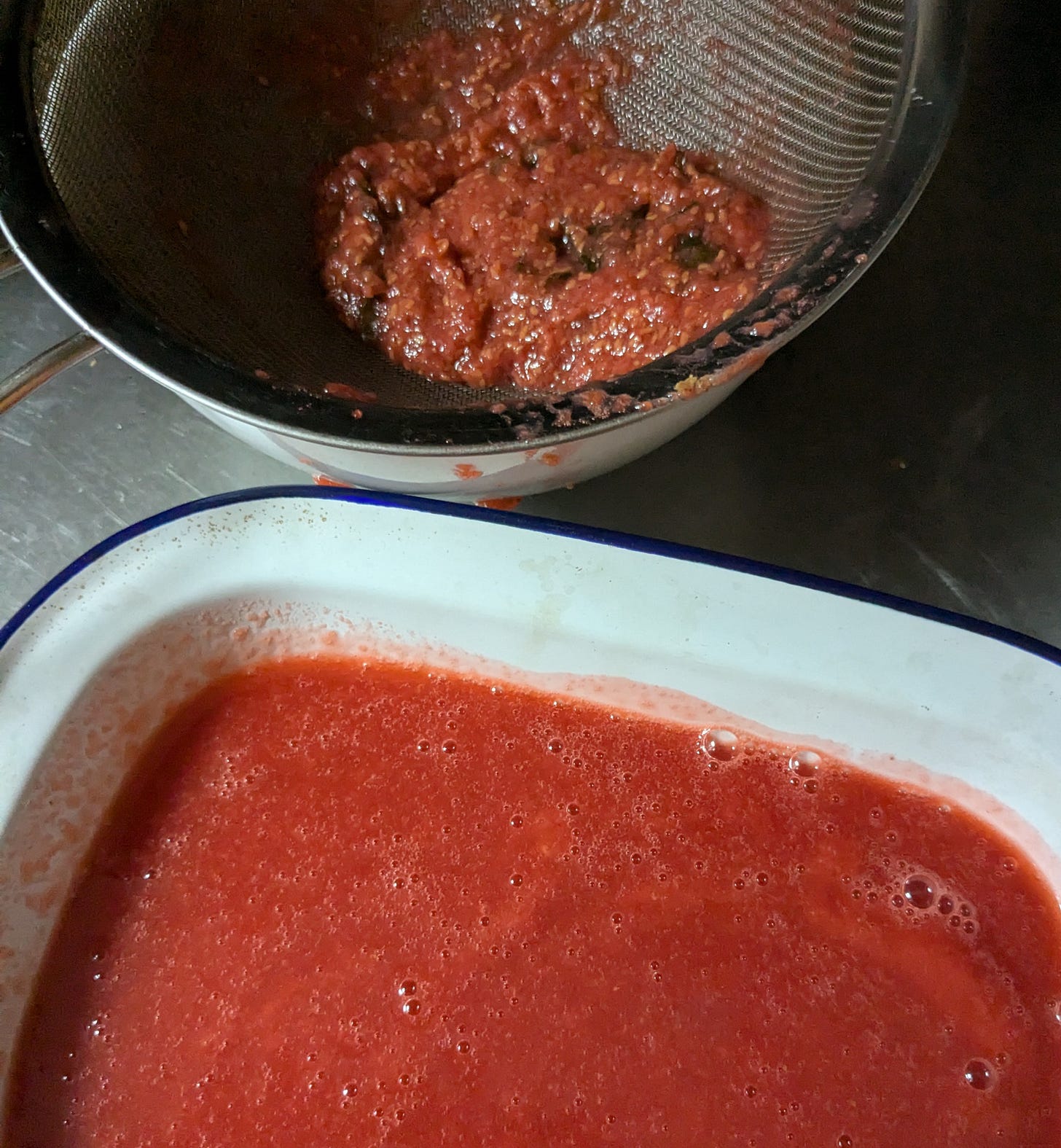
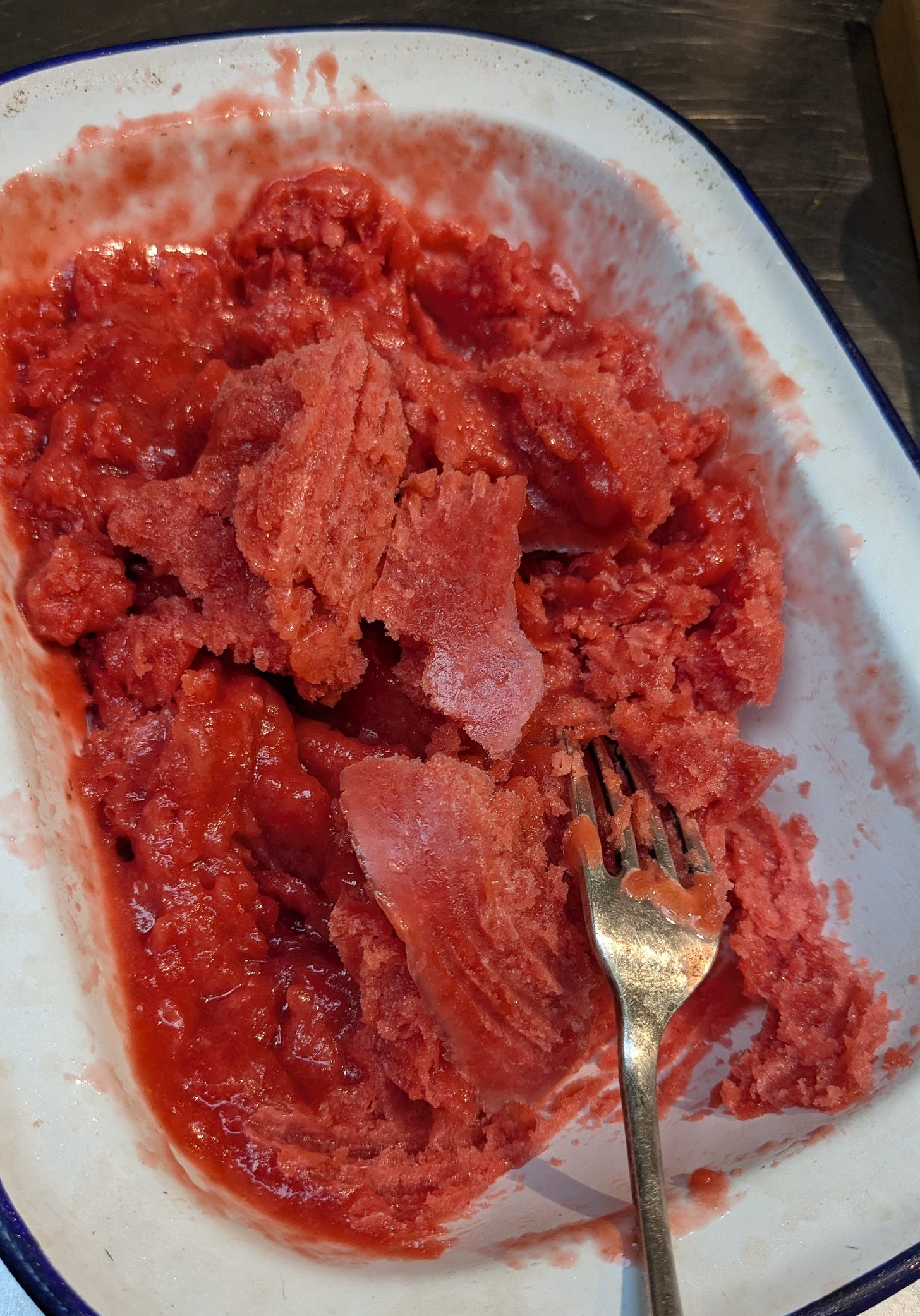
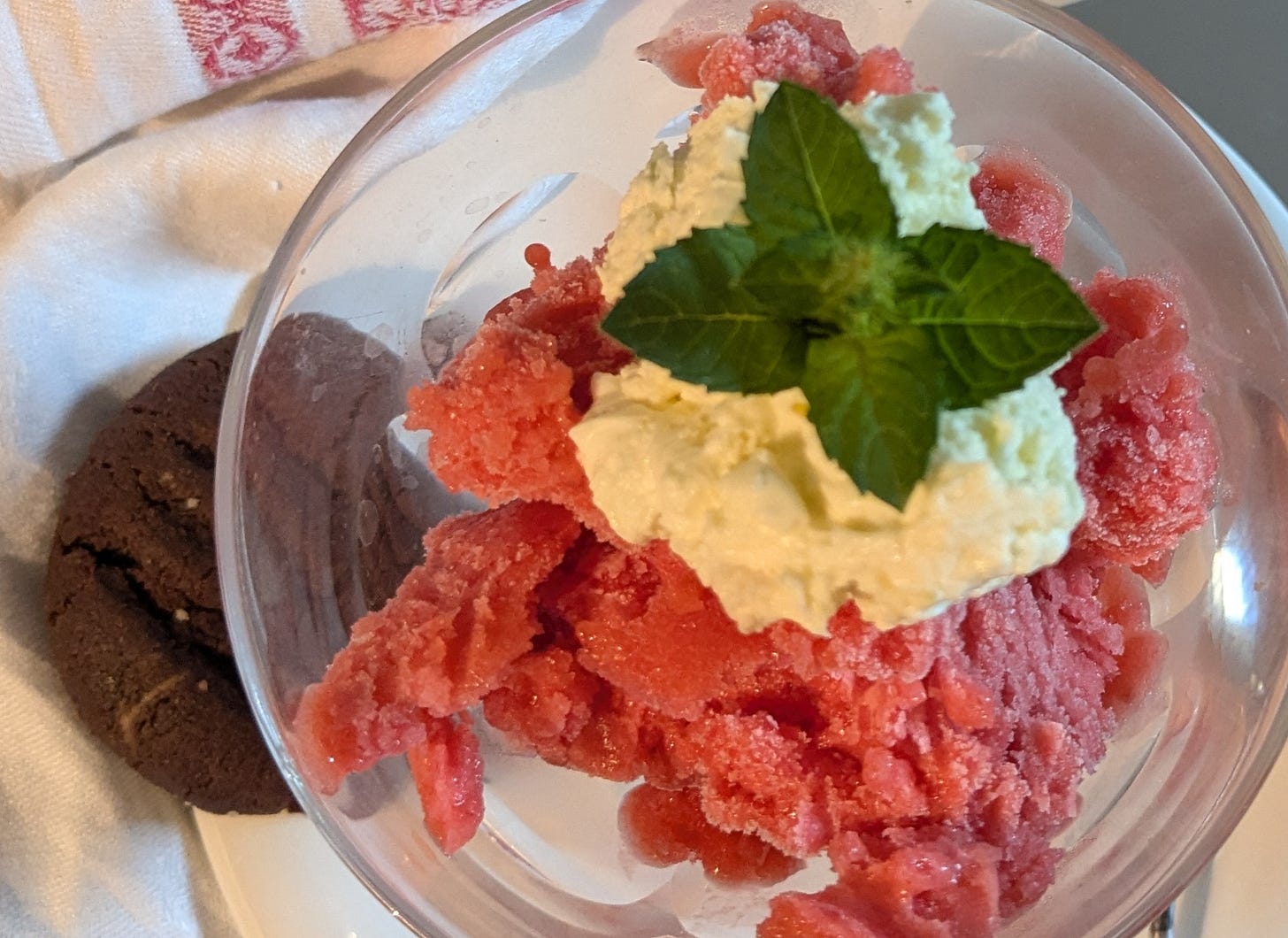
Your writing is my jam. Thanks for solving my bowl of blueberries that I haven't processed because they are wild Maine ones and super small and a bit bursty et voila... granita merci buckets!
This is something my kids might enjoy making next time they’re hounding me for ice cream!